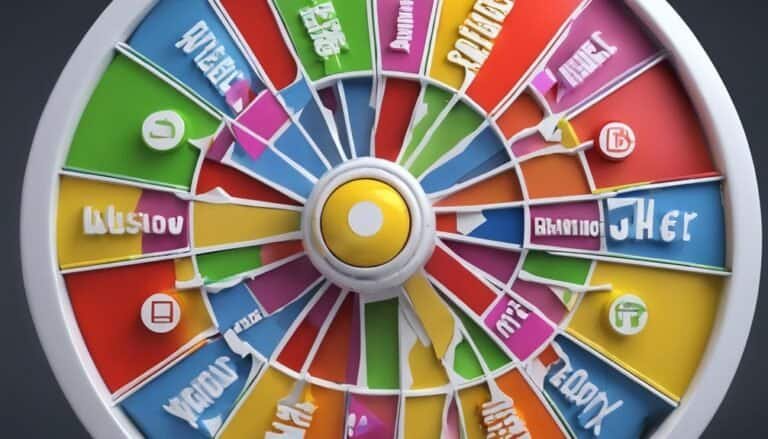Understanding the Stroop Effect in Cognitive Science
Have you ever found it hard to name the color of a word when reading it? This challenge is known as the Stroop Effect. It shows how our cognitive control works and how we handle information. The Stroop Effect is key in cognitive psychology. It shows the battle between automatic and controlled thinking, making us think about filtering out distractions.
John Ridley Stroop first discovered this effect. It has changed how we see attention and how our minds handle information. This effect is important for psychology studies and helping people in therapy.
In this article, we’ll explore the Stroop Effect’s history, experiments, and importance. We’ll see how it has changed our view of how our brains work, including attention and handling distractions.
Key Takeaways
- The Stroop Effect shows how automatic and controlled thinking clash.
- John Ridley Stroop’s study showed ink colors were harder to see because of interference.
- This effect is key for understanding selective attention and how we process information.
- Responses can vary based on gender and age.
- Practice and experience can lessen the Stroop effect over time.
- The Stroop task is still a key test in cognitive and neuroscientific studies.
What Is the Stroop Effect?
The Stroop Effect shows how our brains struggle when we try to name the color of a word that doesn’t match the word. For example, seeing “blue” in red ink makes it harder. People take longer to respond because reading is automatic, but naming colors requires more effort.
The Stroop Color and Word Test (SCWT) helps check how well we handle cognitive challenges. There are different ways to score this test, each showing a unique aspect of the Stroop effect. Italian research has shown various versions of the SCWT, each with its own set of rules.
A review looked at 32 articles on how to score the SCWT. It found five studies with Italian data. These studies looked at things like how long it takes to complete the test, the number of mistakes, and other scoring methods. The review also covered 27 studies with different groups of people, showing the Stroop Effect is a global issue.
The Stroop effect was first mentioned by J.R. Stroop in 1935. His work showed that mismatched stimuli can make tasks take up to twice as long. For example, one test took 10.1 seconds, while another took 22.4 seconds.
Studies using brain scans have found that certain brain areas are key to the Stroop effect. Researchers keep finding new ways to test the Stroop effect, like the Directional Stroop Effect and the Counting Stroop Effect. These tests give us new insights into how our brains work with language.
Historical Background of the Stroop Effect
Psychologist John Ridley Stroop first talked about the Stroop Effect in the 1930s. His work built on earlier studies on reading speed and how our brains process information. In 1935, he published a key paper in The American Journal of Experimental Psychology.
This paper introduced the idea of cognitive interference from conflicting stimuli. It laid the groundwork for many studies in cognitive psychology.
Stroop’s experiments showed how conflicting words made people slower by 47.0 seconds on average. This was a 74.3% increase over normal color naming times. When faced with words that conflicted with the color, reaction times went up by 2.3 seconds, or 5.6%.
Since then, over 700 articles have been written about the Stroop effect. This shows its big impact on psychology research.
Studies using brain imaging show that the Stroop task activates certain brain areas. These include the anterior cingulate cortex (ACC) and the dorsolateral prefrontal cortex (DLPFC). This highlights the complex workings of our automatic and controlled thinking.
Stroop’s work has greatly helped us understand how our brains work. It has also led to the creation of tests like the emotional Stroop test in the late 1980s. This test looks at how emotions and attention affect our thinking.
The story of the Stroop effect shows how it has grown from a simple psychology experiment. It has become a key area of study and application in cognitive science.
The Original Stroop Experiments
John Ridley Stroop’s 1935 experiments were key in understanding how our minds work. In these tests, people had to name colors while ignoring the words that said different colors. This showed how our brains handle conflicting information.
Stroop’s tests had three main parts:
- Reading color names in black ink.
- Telling the color of the ink used for the words.
- A mix where people named the ink color for words that didn’t match.
The results showed big delays when the ink color didn’t match the word meaning. This shows how automatic reading is and how hard it is to control our minds with conflicting info.
Other studies before Stroop also looked at how our minds work together. For example, they found that old habits can make it hard to learn new things. This fits with what Stroop found about our minds.
These early tests helped us understand how our minds deal with conflict. They made the Stroop effect a big topic in psychology. These findings led to more studies on how we control our minds in different situations.
| Experiment | Task Description | Findings |
|---|---|---|
| 1 | Reading color names in black ink | No interference (baseline) |
| 2 | Naming the ink color (color words) | Significant delays with incongruent stimuli |
| 3 | Mixed task with color naming and word reading | Increased reaction times due to cognitive conflict |
The original Stroop test is still a key way to study how our minds work. It shows the complex ways our brains handle everyday tasks.
The Stroop Effect in Psychological Research
The Stroop Effect is key in psychological studies. It helps us understand how our minds process information and focus. It shows how people handle information that goes against what they expect. This effect is especially useful for seeing how different ages react and process information.
Older people find it harder to ignore the written word when it clashes with the color of the word. They take longer to react and make more mistakes. This is clear in studies that compare how older and younger people do in these tasks.
Practicing the Stroop task helps everyone, no matter their age. The biggest improvement is seen early on. But, we still don’t fully understand how aging affects this interference.
Studies show that both young and older adults get better with practice. This suggests that older people can improve their thinking skills under the right conditions.
| Study Focus | Age Group | Result |
|---|---|---|
| Interference Effect | Older Adults | Larger interference in Stroop tasks |
| Response Time & Errors | Middle-Aged vs. Younger Adults | Younger adults show faster responses |
| Practice Impact | Both Age Groups | Practice reduces interference |
| Visual Distraction Sensitivity | Older Adults | Higher sensitivity to multitasking challenges |
The Stroop task is also used in clinics to diagnose certain mental health issues. These include ADHD and schizophrenia. Its ongoing use in research shows its lasting importance in studying complex brain functions.
How the Stroop Task Works
The Stroop task is a deep dive into cognitive processing. It shows how our brains handle conflicting information. Participants see color-word stimuli where the ink color doesn’t match the word. For example, seeing “red” in blue ink makes color-word interference. This forces the subject to focus on the ink color, not the word.
Let’s look at the main parts of the Stroop task:
- Cognitive Conflict: The mismatch between the word and its ink color makes reaction times longer. It shows how automatic reading processes clash with the task of identifying colors.
- Neuroscience Insights: Studies using fMRI and PET scans show which brain areas work during the Stroop task. The anterior cingulate cortex (ACC) and the dorsolateral prefrontal cortex (DLPFC) are key for solving these conflicts.
- Applications of the Stroop Task: The Stroop task has been used to test various psychological conditions. This includes attention-deficit/hyperactivity disorder (ADHD) and cognitive issues from brain injuries.
This test helps measure attention and looks into decision-making and information processing. It shows how our minds deal with conflicting information.
| Stimulus Type | Action Required | Example |
|---|---|---|
| Word Matching | Name the color of the ink | “RED” in red ink |
| Color-Word Interference | Name the color of the ink | “GREEN” in red ink |
| Mixed Task | Identify color and read text | “BLUE” in blue ink |
Explanations for the Stroop Effect
The Stroop Effect is a key topic in cognitive psychology. It has led to many explanations about how it works. The Automaticity theory says reading is a skill that happens easily without much thinking. This automatic reading can cause trouble when people try to name colors instead of reading words in the Stroop task.
The Processing speed theory also plays a big part. It believes reading words is quicker than spotting colors. When people try to do both at once, it causes a conflict. This conflict is what we see as the Stroop interference.
| Theory | Description |
|---|---|
| Automaticity Theory | Reading is an automatic process that interferes with color naming. |
| Processing Speed Theory | Word recognition is faster than color identification, leading to cognitive conflicts. |
| Selective Attention Theory | Focus required for color identification exceeds that for word reading. |
Research shows these explanations go deeper than just basic thinking. For example, people with different reading skills may face different levels of Stroop interference. This shows that how well someone controls their attention and their processing abilities affects how they handle conflicting information. These findings add to the debate in cognitive science about the Stroop Effect.
The Role of Cognitive Control in the Stroop Effect
Cognitive control is key in handling cognitive interference during the Stroop task. It helps people override automatic responses to tricky stimuli. The task’s design changes how much control people need, depending on how much the words match the colors.
High match means less conflict, so less control is needed. But low match means more attention is required. This shows how cognitive control changes with the task’s demands.
Studies show that both proactive and reactive control help reduce emotional interference. Proactive control gets the brain ready before a stimulus comes. Reactive control kicks in after the stimulus appears to fix any mistakes.
A study with seventy-four healthy people showed how emotional priming affects cognitive tasks. Sad faces used in the study showed that emotions can impact more than just simple control. Trials with less proactive and reactive control showed how emotions and cognitive tasks interact.
The study highlighted how brain areas like the ACC and DLPFC work together. They help manage the demands on attention during the Stroop task.
- Proactive control gets ready for potential conflicts and focuses attention.
- Reactive control fixes mistakes after a conflict is spotted.
- Both types of control are crucial for beating emotional interference.
Learning about these processes helps us understand cognitive disorders better. These disorders often affect attentional control. By testing cognitive control, we can learn more about how we make decisions and behave.
| Control Mechanism | Description | Emotional Impact |
|---|---|---|
| Proactive Control | Early selection of attention to reduce conflict. | Mitigates effects of emotional stimuli. |
| Reactive Control | Late response correction following detection of conflict. | Overrides emotional distractions post-stimulus. |
The Importance of Attention in the Stroop Effect
The Stroop Effect is key in studying Attention. It shows how our thinking can change when we focus harder. People must name the ink color, not read the words, which is hard.
This task shows how our brains handle different information. Young people often make more mistakes than adults. This shows how our thinking abilities change with age.
Studies reveal that kids take longer to react and make more mistakes in the Stroop task. This highlights the need for better focus skills. Kids show better focus in some situations, which is promising for their development.
The Stroop task is not just for research. It helps doctors understand conditions like ADHD, schizophrenia, and dementia. Since Stroop’s 1935 study, it’s been a top way to test focus in science. These studies help us learn how to improve focus skills, making it easier to handle daily challenges.







